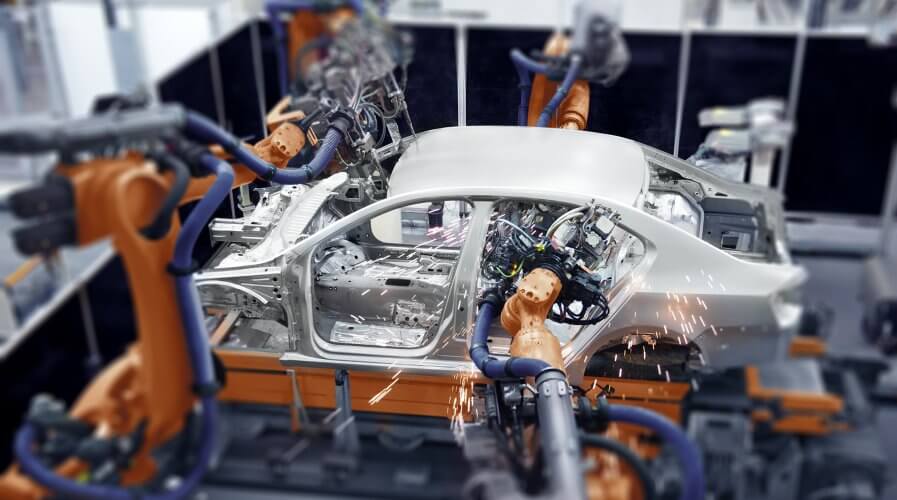
Auto manufacturing is made easier with AI. Source: Shutterstock
Why the automotive industry is betting big on artificial intelligence
WHEN it comes to the automotive industry, artificial intelligence (AI) is a game-changer. Nearly every aspect of car manufacturing and distribution is being significantly disrupted by AI.
In times to come, this industry will only be increasingly reliant on AI. Every facet of it, from design and development, to logistics and sales, will only be enhanced through the use of this technology.
With AI, the possibilities of automating complex processes are endless. However, as processes increase in sophistication, just possessing large amounts of data will not be enough. Further, regular databases will not be able to cater for AI automation, as the quality of data is inversely proportional to the data density.
Data-heavy projects often involve various data streams, ETL processes, analytical and cognitive components. For the automation of these projects, high-quality data must be fed into AI, regardless of context and data density.
Therefore, a high-performance data processing pipeline must be in place when it comes to using AI. They are the base of AI-driven solutions, and provides a data environment that enriches AI applications, and decision-making in real-time.
As mentioned, AI is already making waves in the automotive industries.
Take Natural Language Processing (NLP) as an example. NLP is a form of AI that extracts meaning from the human language to make informed decisions.
Working on a fixed set of algorithms, NLP systems in a car will be able to pick up questions such as “How do I open the hood?” and respond adequately, automatically and in real-time.
Another application of AI in the industry is the identification of in-car needs.
Based on a manageable chunk of data, AI can be used to create driver profiles. Data can be as simple as identifying passengers are in a car and their sitting arrangements.
This will then show the car how to best cater to their needs, such as where and when to activate heated seats.
Information from the driver profiles can then be leveraged for the car to adapt to driver preferences. This further benefit the user, as it decreases distraction, leading to improved safety.
A final example of how AI is used in the industry is in predictive analytics.
When incorporated into the production process, it can help identify anomalies even before an issue arises. This would reduce downtime, thereby improving output and profitability.
The bottom line is that eventually, no sectors in the automobile industry will be left untouched by AI. Most business leaders recognize this, and have AI deployment as part of their core strategy.
However, the successful adoption of AI into businesses is still slow.
Despite the scale of investment and enthusiasm shown by industry leaders, there has yet to be significant progress made in terms of AI-driven transformations.
Further, compared to big, established companies, smaller ones experience greater struggles in deploying AI-driven solutions.
Business leaders must be cognizant of this, as AI is the future. It will enhance quality, increase efficiency, and decrease various risks. Driven by data, AI will also improve the type and level of service that automakers can provide for their customers.
Therefore, industry leaders should up the scale of investment in AI, focus on upskilling and educating employees, and reap the full benefit of AI deployment in the automotive industry.
READ MORE
- The criticality of endpoint management in cybersecurity and operations
- Ethical AI: The renewed importance of safeguarding data and customer privacy in Generative AI applications
- How Japan balances AI-driven opportunities with cybersecurity needs
- Deploying SASE: Benchmarking your approach
- Insurance everywhere all at once: the digital transformation of the APAC insurance industry


